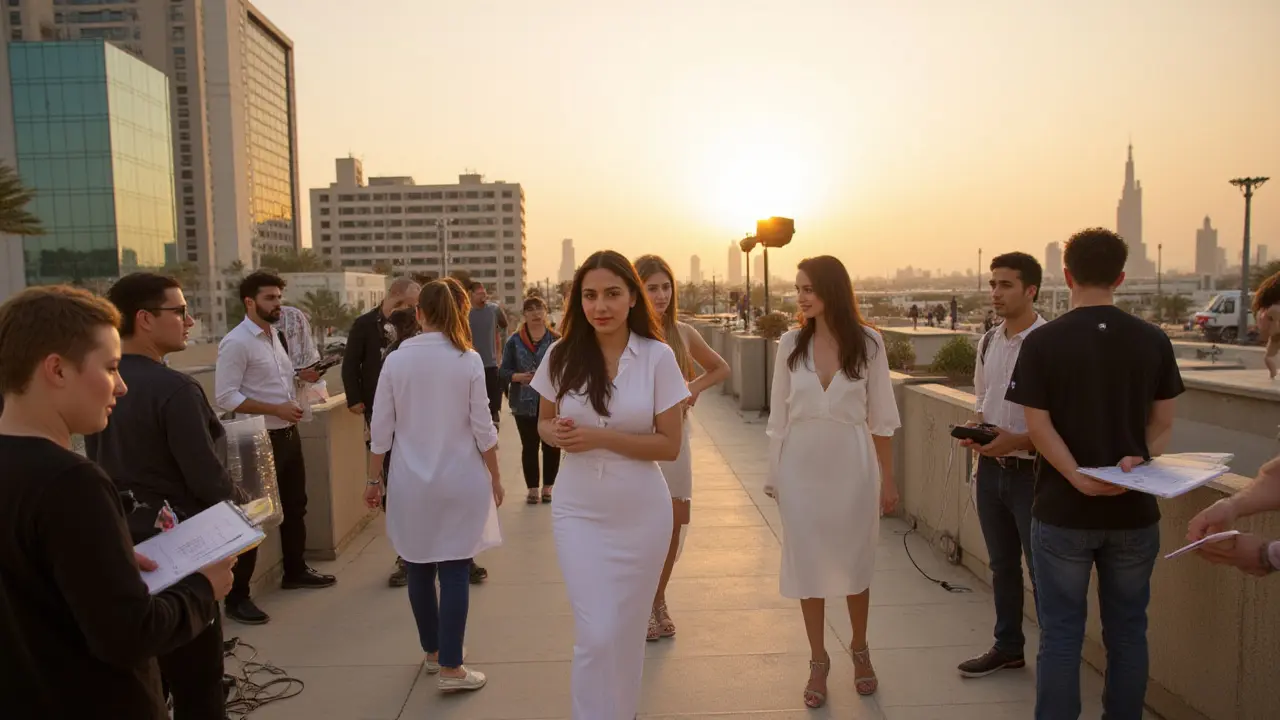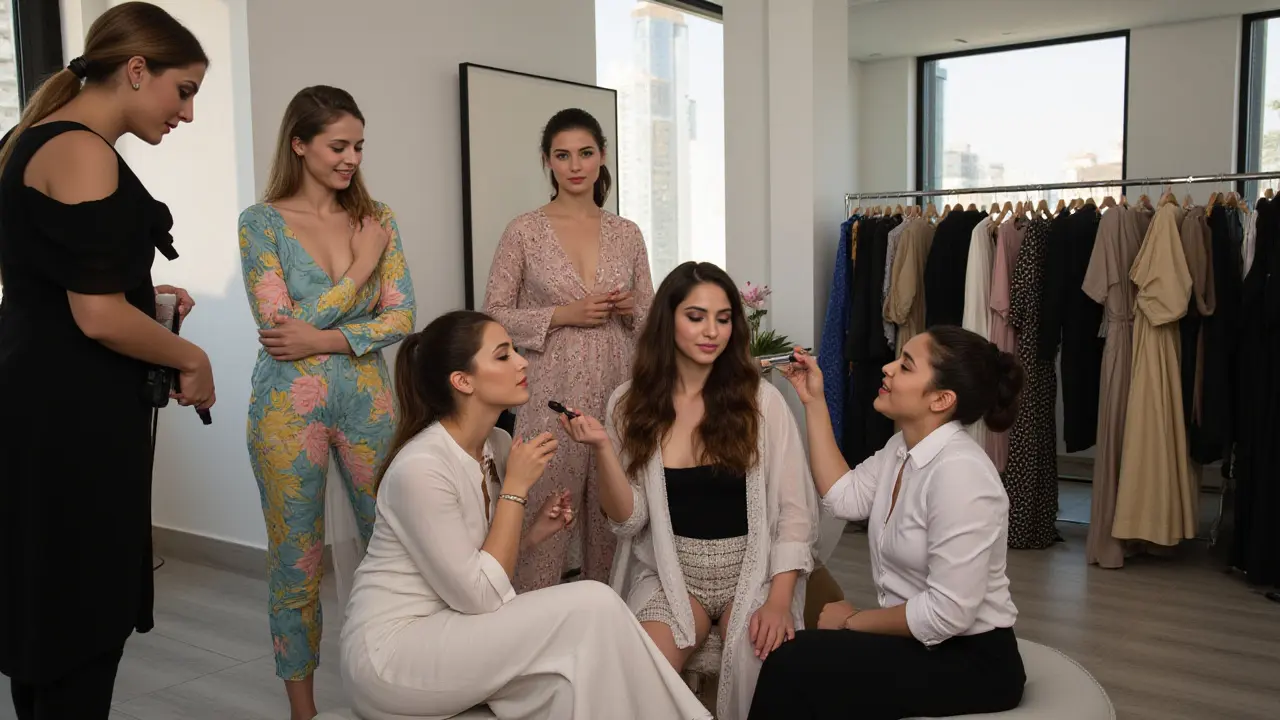Stuck waiting at a photoshoot that never seems to end is every model's secret nightmare. Most imagine glamorous studios and swift sessions, but the real timeline? It’s not as quick as scrolling through Instagram. Seasoned models have stories of ten-minute quickies and twelve-hour marathons, all in a day's work—or sometimes, all in one shoot. But how long does a model photoshoot actually take, and what can you expect before stepping in front of the camera? Keep reading, because knowing what’s in store could make or break your next booking.
How Long Does a Model Photoshoot Take: Quick Answer & Key Points
If you’re just after the facts: a typical model photoshoot runs 2 to 8 hours. Editorial and fashion shoots often go even longer (think 10 to 12 hours), while simple portfolio updates can be wrapped up in less than an hour. Here are the biggest takeaways:
- Photoshoot duration depends on shoot type, number of outfits, team size, and creative direction.
- Commercial shoots for brands with multiple products or locations can stretch out for a full day.
- Prep—like hair, makeup, and test shots—can easily add 1-2 hours before you even strike your first pose.
- Fashion, editorial, and campaign shoots set aside plenty of time for lighting changes, creative tweaks, and unpredictable moments.
- Efficiency often comes down to experience—producers and photographers who run tight sets keep things moving, but even then, delays happen.
Behind the Scenes: What Really Happens During a Model Photoshoot?
Photoshoots are not as effortless as they look on a glossy magazine page. The process actually starts days—or sometimes weeks—before you arrive. After booking, you’ll often get a mood board. This is that secret Pinterest board from the creative director spelling out everything: the vibe, the colors, the story. Seasoned models study these boards like a final exam because the more you understand the theme, the better you’ll fit in on set.
Hair and makeup are the first big time block. This isn’t your regular morning routine. Professional hair and makeup teams often spend 45 minutes to 2 hours per model, tweaking looks until perfection. And if the job calls for several changes (think, different hairstyles for multiple outfits) expect these touch-ups to stack up.
Next comes wardrobe fitting. Sometimes there’s a rack of clothes ready; other times, designers pin, tuck, and primp outfits right on the spot. This alone can turn into an unexpected hour, especially if the samples don’t fit perfectly or if stylists get inspired to make changes.
Once on set, the technical crew—photographer, lighting assistants, set builders—fine-tunes the setup. Lighting can take 10 minutes or almost an hour to get right. And just when you think you’re ready, they might ask for test shots, then more lighting tweaks. Modeling in front of a bunch of busy people isn’t always as easy as it looks, especially with the pressure of the clock ticking and eyes all on you.
When the actual shooting starts, time speeds up and slows down at the same time. Some shots are quick: you nail the pose, the light catches your cheekbones, everyone’s happy, and you move on. Other shots are more stubborn. Sometimes it takes 30, 40, or even 100 shots before the team captures “the one.” Multiply that by several outfit changes, background tweaks, or group shots, and now you see why full-day shoots are common.
Don’t forget the breaks! Snacks, bathroom runs, and phone checks sneak in—models, like everyone else, need to recharge. On big productions with multiple looks, it’s typical to schedule breaks every couple of hours, comfort food included. Genuinely, seasoned models keep a stash of high-energy snacks and water bottles tucked in their bags to survive marathon sessions.
Finally, photographers usually want to check shots on screen before wrapping—that means reviewing, chatting, and sometimes even re-shooting a few images. It’s not uncommon to tack on an extra half hour at the end for this final review. For the ultra-organized sets, things wrap on schedule, but if there’s even one delay (like a late shipment of shoes, or a light that decides to give up) the timeline stretches out.

Types of Model Photoshoots and Their Timelines
Not all photoshoots are created equal—and their duration isn’t either. Here’s a breakdown that might surprise you:
- Fashion Editorial Shoots: These are the artistic, magazine-style shoots filled with elaborate concepts. They can run six to twelve hours, sometimes longer. Magazine teams want perfection—expect tons of lighting changes, dramatic makeup swaps, and endless wardrobe adjustments. Vogue famously spends up to sixteen hours on a high-concept editorial, with models sometimes clocking in before sunrise.
- Commercial/Brand Campaigns: Shooting lookbooks or ads for major brands? Block out a whole day—8 to 10 hours is standard, especially if you’re dealing with different sets, locations, and multiple models. Brands like Zara and H&M often shoot dozens of products at once.
- Portfolio/Comp Card Shoots: If you’re building or updating your portfolio, these are usually fast. One to three hours is normal—shoot, review, swap outfits, done!
- Lifestyle Shoots: These mimic real-life moments (think: “model laughing with coffee”). They can be pretty efficient, usually wrapping in 2-4 hours, unless you’re shooting multiple scenes or locations.
- Beauty Shoots: Close-ups need precise lighting and a patient touch with makeup and hair. Even with only one or two looks, these can run 3-5 hours.
- Runway Backstage: If you’ve ever seen the chaos backstage during Fashion Week, you know: models might spend six hours prepping and waiting… then walk the runway for 45 seconds.
If you’re a parent or just have a tight schedule (hey, Marcelline’s after-school pickup waits for no one), always double-check the expected timeline before you confirm. Shoots for e-commerce and catalogs may promise “half-day” but often stretch with last-minute changes.
Tips to Stay Energized and Efficient: Pro Model Strategies
Let’s get real for a second—shooting for hours under hot lights, swapping tight outfits, and smiling on cue isn’t easy. Here’s how to survive (and shine) in those marathon sessions:
- Bring healthy snacks and water. Simple, sure, but you’d be shocked at how many new models forget. Long shoots can mean awkward meal times but you don’t want to crash halfway through.
- Pep-talk yourself. Sounds cheesy? Maybe, but staying confident and positive on set actually speeds things along because you’re more likely to nail the shot quickly.
- Pack a “model kit”—think: nude underwear, clear deodorant, touch-up makeup, comfy sliders or sandals, and mini sewing kit.
- Plan ahead with your calendar. Assume the shoot will run over by an hour or two—better to have a buffer than stress out about missing your next appointment.
- Check wardrobe notes in advance. If there’s anything you need to bring, pack everything the night before, not five minutes before leaving.
- Stay plugged in with the team—ask the photographer or producer early if there are priorities (ex: specific shots they most want to nail). Sometimes these change fast on set.
- Learn basic posing and facial expression tricks before you arrive. This cuts down on direction time. Go ahead, practice in the bathroom mirror.
- If you need to bring your own makeup kit, check the expiration dates. The last thing you want is to break out from old mascara during a beauty shoot!
- Most importantly, don’t be afraid to speak up—if you’re tired, hungry, or uncomfortable, let someone know. Sets work best when everyone’s honest and comfortable.
A little preparation goes a long way. One model friend recently told me she stashes ginger chews and a playlist of pump-up songs to get through the 4 p.m. slump. Whatever your secret weapon, bring it with you—your energy, and your photos, will thank you.
